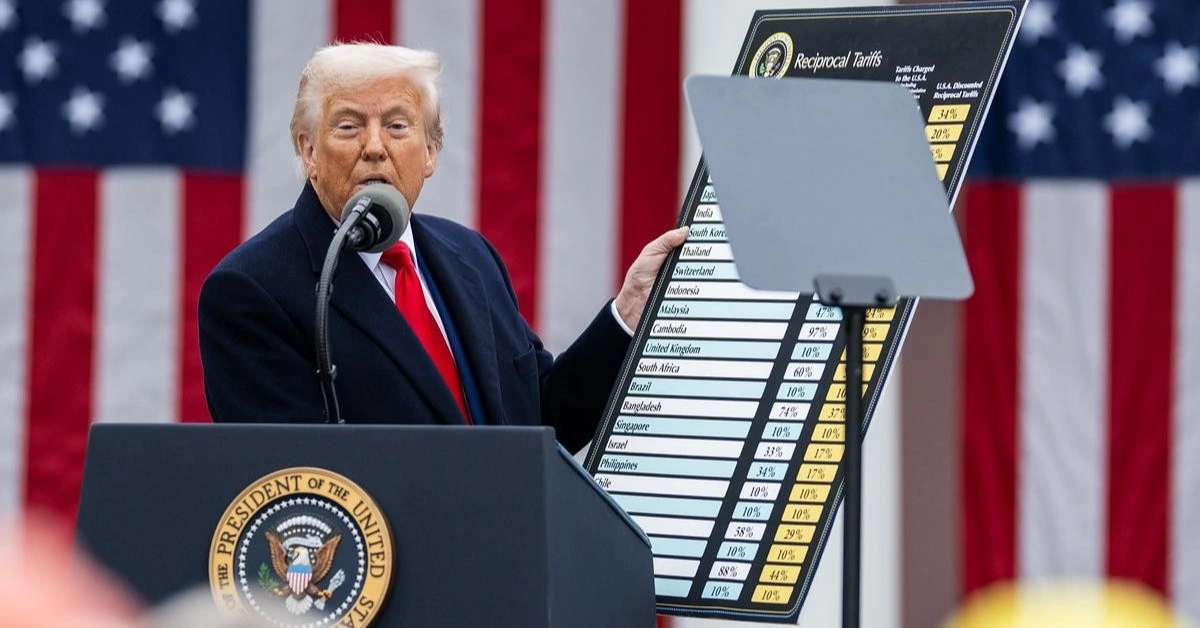
USA – In a dramatic announcement that sent shockwaves through global markets, President Donald Trump unveiled a flat 10% tariff on all imports, with higher rates imposed on countries deemed responsible for “horrendous imbalances” in bilateral trade.
While the tariff regime, dubbed “Liberation Day” tariffs, is set to reshape international trade dynamics, the pharmaceutical industry has so far been granted an exemption.
However, industry leaders remain cautious, bracing for potential downstream effects in what could escalate into a full-blown global trade war.
Under the new tariff structure, countries such as the United Kingdom will face a 10% tariff starting April 5, while the European Union is set for a 20% rate, India 26%, and China a steep 54% on imports into the U.S.
In contrast, Russia has been spared due to negligible trade volumes, and Ukraine falls under the 10% bracket.
Despite these measures, the exemption for pharmaceuticals provides a temporary relief to a sector that is crucial for public health and innovation.
Pharmaceuticals, along with a select group of industries—such as copper, lumber, semiconductors, energy, bullion, and certain minerals—are currently exempt from these tariffs.
This exemption has buoyed investor sentiment, as evidenced by rising shares of major pharma companies like AstraZeneca and GSK. Yet, concerns persist regarding the scope of the exemption.
While finished medicines are covered, the potential application of tariffs to raw materials, active pharmaceutical ingredients, and components used in manufacturing could drive up production costs and ultimately lead to higher drug prices in the U.S.
The Biotechnology Innovation Organization (BIO) has warned that nearly 90% of its member companies rely on imported components for at least half of their FDA-approved products.
Such dependence could render the biopharma sector particularly vulnerable if tariffs begin to affect critical supplies.
With an estimated one-third of U.S. medicines imported—approximately US $200 billion out of a total US $560 billion consumed in 2024—the ripple effects of these tariffs could be far-reaching, impacting both the cost and availability of essential drugs.
Amid these developments, President Trump has insisted that his tariff policies are designed to repatriate manufacturing jobs and eliminate the U.S. trade deficit.
Some leading pharmaceutical companies, including Eli Lilly and Johnson & Johnson, have already signaled plans to invest in new manufacturing facilities on U.S. soil.
However, there is growing speculation that the industry might face a phased introduction of additional, targeted tariffs on pharmaceutical products, particularly if the government later deems that domestic production has not sufficiently ramped up.
Reports from inside the administration suggest that discussions are underway about eventually implementing a 25% tariff on medicines—a move that would likely be introduced gradually to allow the industry time to adapt.
Key export markets, such as Ireland—home to a high density of U.S.-owned pharmaceutical facilities—and India, a major supplier of generics to the U.S., are watching these developments with considerable concern.
The potential imposition of tariffs on the components and raw materials used in drug manufacturing could disrupt global supply chains and ultimately lead to increased costs for American consumers.
XRP HEALTHCARE L.L.C | License Number: 2312867.01 | Dubai | © Copyright 2025 | All Rights Reserved